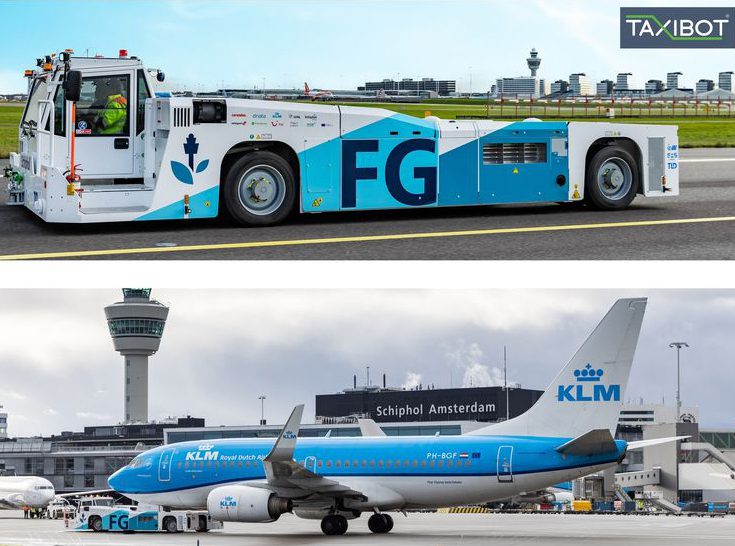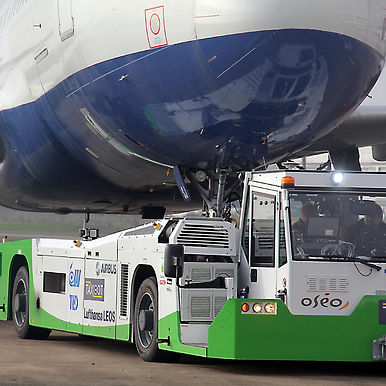Schiphol and partners have started conducting follow-up sustainable taxiing tests. At the airport, a KLM plane drove from Schiphol-Centre to and from a platform near the Zwanenburgbaan Runway with its engines switched off. This way of taxiing can significantly reduce fuel consumption and therefore CO2, nitrogen and ultrafine particle emissions. This trial run marks the start of various tests with the two semi-robotic taxiing systems that Schiphol purchased earlier this year.
TaxiBots will be deployed at the airport over the next year and a half. The TaxiBots will take some planes to a location further away from the gate and en route to the runway to start their engines there. Further operational experience with this vehicle will be gained by carrying out pushbacks and by towing empty aircraft.
Polderbaan preparations
According to the original plan, continual test drives to and from the Polderbaan Runway were to have been carried out at the moment. The plan has been modified and now studies, simulations and tests will be carried out over the next eighteen months and as much experience as possible will be gained with the TaxiBots. The aim is to test, introduce and scale up new procedures for sustainable taxiing to and from the Polderbaan, among other locations, from mid-2024.
Sustainable taxiing as standard
Schiphol is striving for sustainable taxiing at the airport in 2030, together with Air Traffic Control the Netherlands (LVNL), KLM, Transavia, Corendon Dutch Airlines, TUIfly and ground handling companies dnata, Swissport, Viggo, KLM Ground Services and TaxiBot provider Smart Airport Systems. The Ministry of Infrastructure and Water Management is supporting the initiative. The tests are part of European initiatives within the framework of the ALBATROSS-consortium and its successor: HERON. These subsidy projects aim to make aviation more sustainable.


